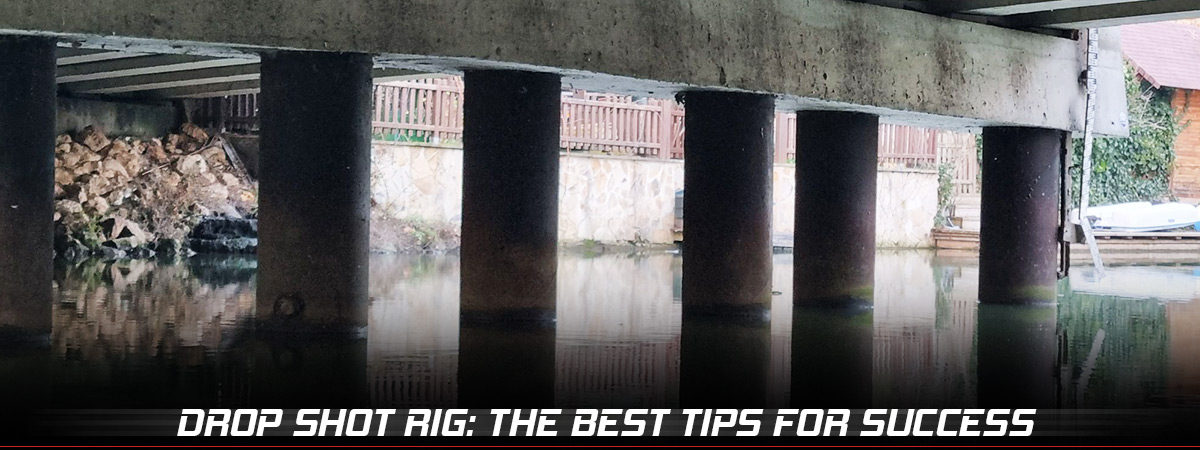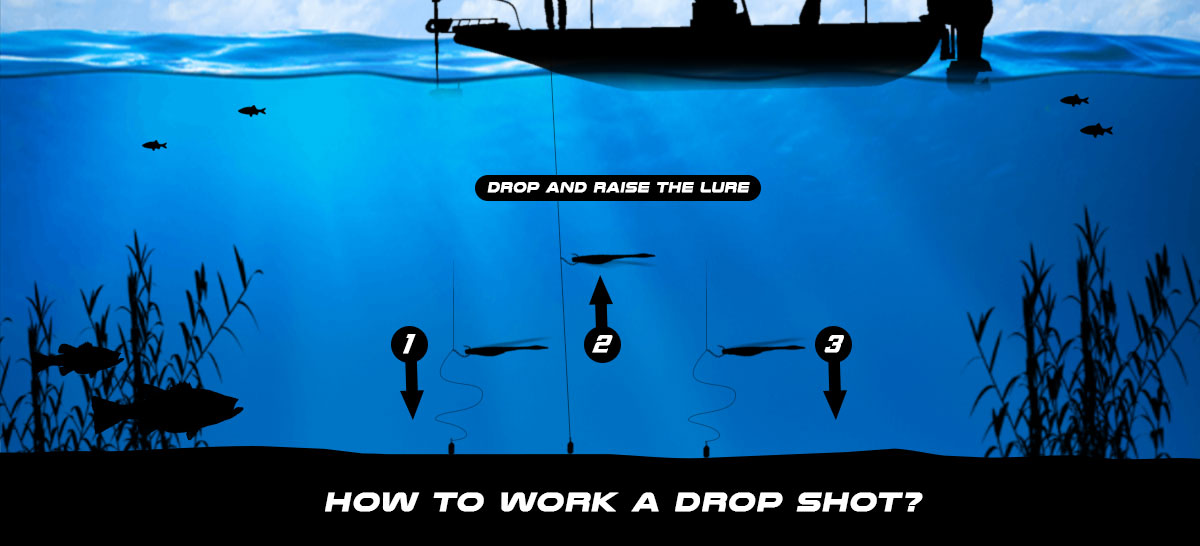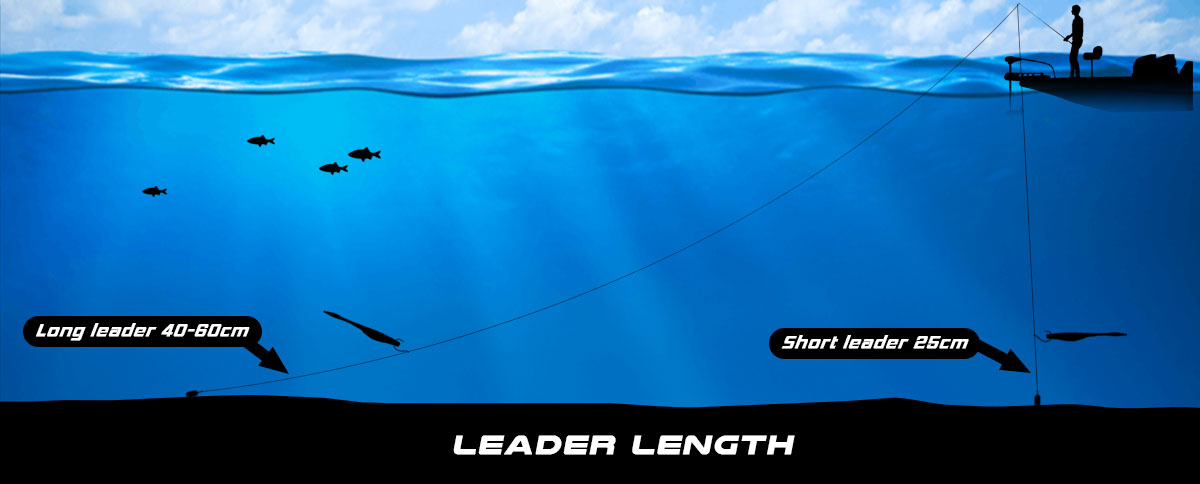
It’s impossible to trace back the genesis of the drop shot rig. It was most likely inspired by deep water saltwater rigs. It was then in the late 90s adapted to bass fishing by Japanese anglers who developed specific tackle like drop shot hooks and sinkers. From Japan’s high pressured lakes it jumped to California also highly pressured waters and moved eastward to us here in Europe.
Drop shot fishing is sort of a niche technique, highly efficient under certain circumstances but maybe not the most versatile and widely used as a jig head or even a Texas rig. Let’s first understand how it works and the benefits.
Let’s go over the rig, it’s basically a weight sinker tied to the line below the lure. It’s the quintessential finesse because it allows a small lure to be presented on the bottom but with the freedom of a weightless rig. Once the weight is on the bottom, the lure just hangs suspended in front of the fish. The hook is tied with a Palomar knot, facing up. It can be a simple drop shot hook or a light wire offset hook for snag-less rigging.

Although it can be used differently, the main action or benefit of a drop shot is the capacity to move the lure without bringing it back. Once the sinker hits the bottom, just shake your rod tip. The lure will vibrate and shake but stay in place. I also like to let the lure sink slowly on slackline and raise it back up. It looks a lot like a dying minnow struggling with the last grasp on life.

As is often the case, we tend to overwork our lures. A drop shot is best at catching fish by just doing nothing and letting it just sit there motionless. Of course, it’s possible to do that with other rigs. But the lure will be on the bottom, maybe hidden in mud or grass. While a drop shot is hovering making it much more visible and tantalizing.
Used that way, a drop shot is at its best for fishing a specific precise spot but not for covering water. I select a drop shot when I want to saturate a spot, not waste time in combing empty water. It reaches the bottom quickly and once there, stays on the spot for as long as I wish. I will typically fish it around bridge pilings, sea walls, or other man-made structures. It’s also good for offshore spots such as rock piles, drop-offs, and grass patches.
The main variable is the length of the leader. For the above-mentioned situation, I will set it at about 25 centimeters (10”). It’s enough to be distinctly off the bottom but still easy to manage for short casts in front of the boat.
Virtually any soft plastic lure can be presented to the fish on a drop shot rig. However, I have found that worm-type slender bait will respond better to the shaking usually associated with the rig. I also favor lures made out of a softer plastic allowing vibration with the slightest tremor.
Because the fish will have all the time to look at the bait it’s important to pay close attention to the color. Try to match local forage and dominant color in your body of water. It’s my personal preference but I’ve found purple and blue to be very versatile colors.

As we said a drop shot is essentially designed to be fished at short range and work over tiny distances. But that’s not to say it’s the only way to fish it. It can be used on long-range fishing to cover water. The prime benefit put to use here is the ability to rig a heavyweight and yet keep the bait freedom of movement.
The overall rigging of the lure is identical to the short-distance setup. Only the leader size can differ. There are two schools of thought: the short leader and the long leader. The reasoning behind the latter is because of the angle of the line with the bottom on a long cast. Indeed if we wish to keep the lure of the bottom a longer will be necessary. A long 50 to 70cm (25”) is preferred.

The other alternative is a very short leader about 10 cm (4”) turning the drop shot into a reversed texas rig. I tend to favor a long leader with baitfish imitation and a short leader with crawfish baits.
I don’t know who came up with the idea for the drop shot weights design, but he didn’t think it through. The little pinching device is ridiculous and will cut the line way too easily. What you want to do is open it up with the tip of a knife or a mini-screwdriver or even a hook. Be very gentle because the wire has been stressed and will break easily. You don’t need to open it much, then all you need to do is tie your line and you won’t lose near as many drop shot sinkers.
If you don’t want to retie after each fish make sure you don’t boat flip your fish but grab them in the water. That will prevent the line from getting horribly tangled and mangled forcing you to retie.
When the bite is on, a drop shot is a fun and very efficient way to catch fish, perch in particular. And when it’s tough, it might be the only solution to buy a bite. It’s, therefore, a good idea to master this proven technique to catch more fish!